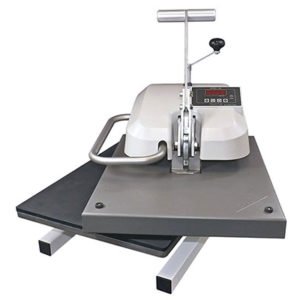Direct to Film (DTF) printing has emerged as a game-changer in the custom printing industry, offering unparalleled versatility and quality for printing on various substrates. Whether you’re a seasoned printing business or a hobbyist looking to explore new printing methods, DTF printing presents an exciting opportunity. Here are answers to some of the most common questions about DTF printing, from the necessary equipment to the process itself.

What is DTF printing, and how does it work?
Direct to Film (DTF) printing is a method of transferring designs onto fabrics and other substrates using a special type of film. The process involves printing a design onto a clear PET film, applying an adhesive powder, and then using heat to transfer the design from the film to the substrate. Unlike traditional screen printing or DTG (Direct to Garment) printing, DTF does not require pre-treatment of fabrics and can be used on a wide range of materials, including dark and light fabrics.
Do I need a special printer for DTF transfers?
Yes, DTF printing requires a specific setup, including a printer that’s capable of handling DTF inks and printing on the special PET (polyethylene terephthalate) films used in the process. You have two options: purchasing a dedicated DTF printer or converting an existing inkjet printer to use DTF inks and films. DTF printers are designed to work with DTF inks and films, ensuring high-quality prints. If you choose to convert an inkjet printer, it’s important to ensure compatibility with DTF inks and the modification process, which can involve changes to the ink delivery system.
What kind of inks are used in DTF printing?
DTF printing uses a specific type of ink formulated to adhere to the PET film and transfer effectively to various substrates. These inks are different from the inks used in traditional inkjet or sublimation printing. DTF inks are designed to be flexible and durable, allowing for vibrant, high-quality prints that can withstand washing and wear.
Can DTF printing be done on any type of fabric?
One of the significant advantages of DTF printing is its versatility. It can be used on a wide variety of fabrics, including cotton, polyester, blends, and more, without the need for pre-treatment. This flexibility makes DTF printing an excellent option for custom apparel, accessories, and other fabric-based items.
What equipment do I need to start DTF printing?
To start DTF printing, you’ll need several key pieces of equipment:
A DTF printer: This can be a dedicated DTF printer or a converted inkjet printer capable of using DTF inks.
DTF inks: Specially formulated inks for DTF printing.
Transfer film: A PET film designed for DTF printing.
Adhesive powder: A polyurethane powder that helps the design adhere to the substrate.
Heat press: Used to transfer the design from the film to the substrate under heat.
Software: Graphic design software for creating and managing your designs.
How Do I prepare designs for DTF printing?
Design preparation for DTF printing involves creating your artwork using graphic design software, ensuring it’s suitable for printing. The design is then printed in reverse onto the PET film. After printing, the adhesive powder is applied to the design, which is then melted to create a bond between the ink and the powder. This process ensures that the design can be effectively transferred to the substrate.
What are the advantages of DTF printing over other methods?
DTF printing offers several advantages over traditional printing methods, such as screen printing or DTG. These include:
Versatility—DTF printing can be used on a wide range of fabrics and colors.
Quality—Produces vibrant, high-quality prints that are durable and wash-resistant.
Convenience—Unlike DTG, DTF does not require pre-treatment of fabrics, saving time and resources.
Efficiency—DTF printing is suitable for both small and large runs, making it efficient for custom orders.
Consider DTF printing for your next custom project
DTF printing represents a significant advancement in custom printing, offering versatility, quality, and efficiency. By incorporating DTF printing into your process, you can boost the quantity of your output without sacrificing the quality of the finished product.
Whether you’re looking to start a printing business or expand your current offerings, DTF printing provides a compelling option with its ability to produce vibrant prints on a wide range of substrates. By understanding the equipment, process, and materials involved, you can harness the full potential of DTF printing to create custom products that stand out in the market.
